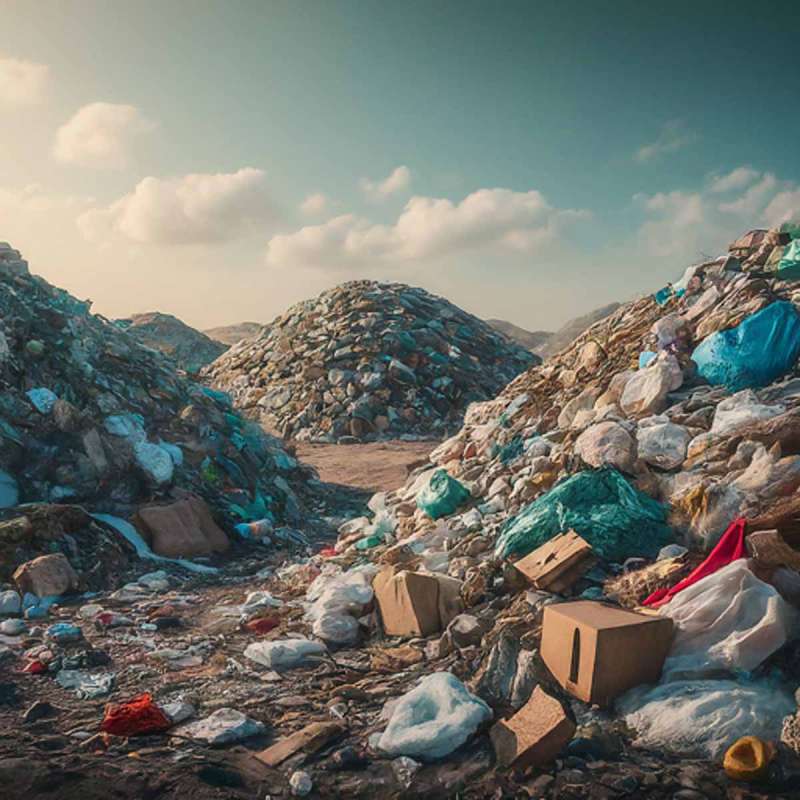
ARTICLE – Green energy is all the rage today. Solar and wind farms dot the landscape with the promise of producing electricity without emissions and reducing the use of fossil fuels. Both come with their own sets of challenges, from manufacturing to recyclability to simple land utilization.
There is another type of green energy production that doesn’t seem to get much press and it’s called Waste to Energy (WtE or sometimes EfW – Energy from Waste). In short, WtE plants take in municipal waste and burn it, producing electricity. Our community abandoned curbside recycling a couple of years ago, replacing it with a WtE solution. We were mortified, moving away from “green” recycling in favor of burning trash. For many of us, the thought of burning trash brings back memories of filthy incinerators belching black smoke into the air.
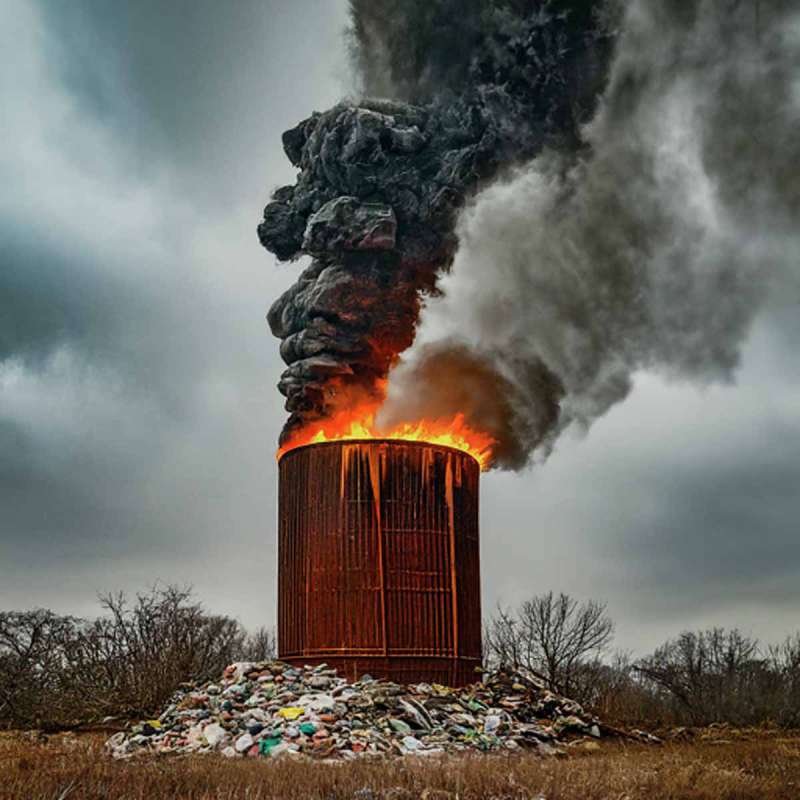
Several leading WtE companies like Wheelabrator Technologies, Suez SA, Waste Management, Martin GmbH, and Covanta Holding Corporation are looking to change that perspective. Covanta is the one that handles our local trash. They recently put on a presentation for our neighborhood and I wanted to pass on some of the things I learned.
A big change happened a few short years ago. China, the world’s leading buyer of recyclables, stopped buying, effectively killing the market for municipal recycling. What happened was that even though folks were separating their waste into trash and recyclables, it was all ending up in the same landfill. Landfills take up space and create greenhouse gases. Plus, eventually, we’ll run out of space and nobody wants to live next to a landfill. WtE does three things. First, it created renewable green energy. Second, it reduces municipal solid waste, potentially up to 100%. Third, it reduces greenhouse gas production by redirecting trash away from landfills.
The slides I will share here were all provided by Covanta, but the process and estimates are applicable across the industry.
WtE takes in municipal waste. Rather than bury it in a landfill where the greenhouse gas, methane is a byproduct, it is routed to a processing facility for metals separation and incineration.
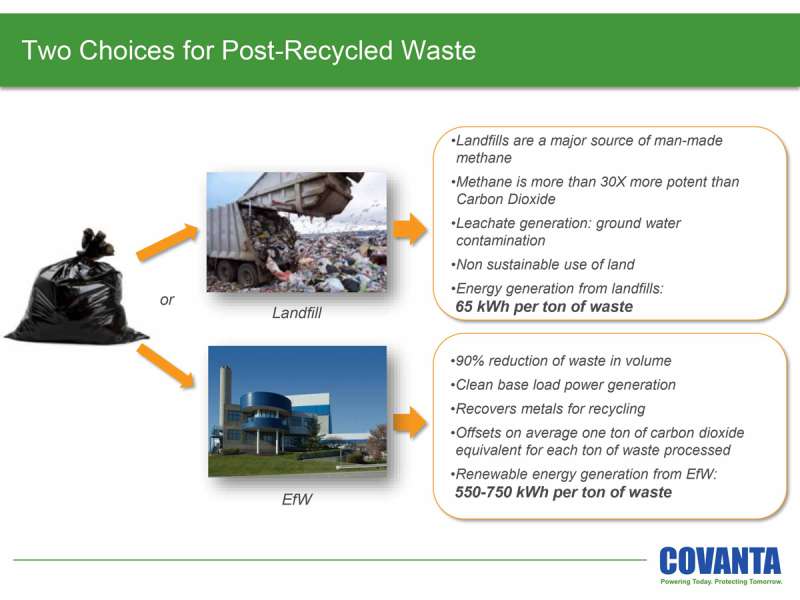
The trash is pre-processed, removing both ferrous (magnetic) and non-ferrous metals for recycling. Hazardous items like lithium batteries (something that never should be put in the trash) are also removed. The rest is put into a furnace. The furnace is initially ignited with natural gas. Once the burn is going, it is self-sustaining. The trash itself provides the fuel. It burns 24/7 at extremely high temperatures, reducing the initial volume of trash by up to 90%. There is a market for the resulting ash as it can be used for road beds in road paving. All the emissions from the furnace are tightly regulated by the EPA. The main emissions from the furnace after a scrubbing process are water vapor and carbon dioxide.
The heat from the furnace is used to produce steam. That steam is sold to cities for heat. The steam is also used to spin turbines that produce electricity that is then sent to the electric grid.
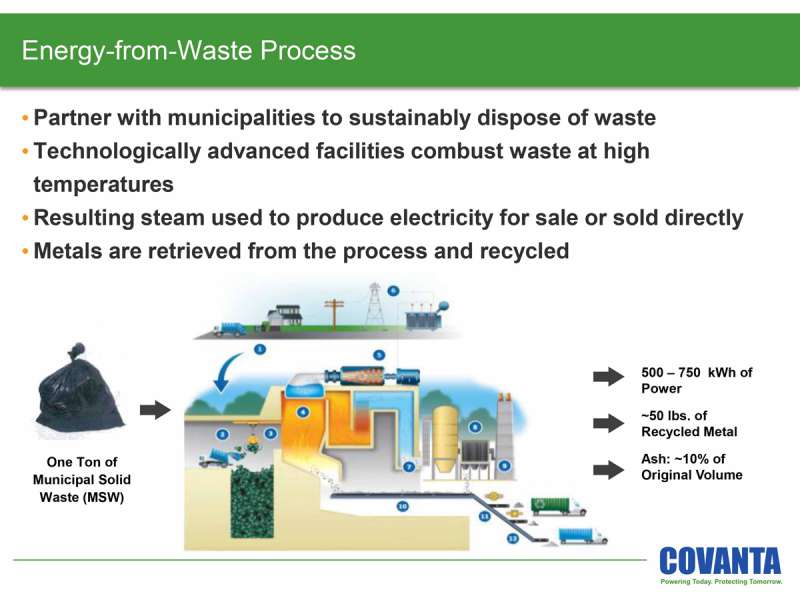
Every ton of waste yields about 50 pounds of recyclable material and between 500 and 750 kWh of electricity while simultaneously eliminating a ton of greenhouse gas that would have been produced in a landfill.
Here’s a quick look at the process.
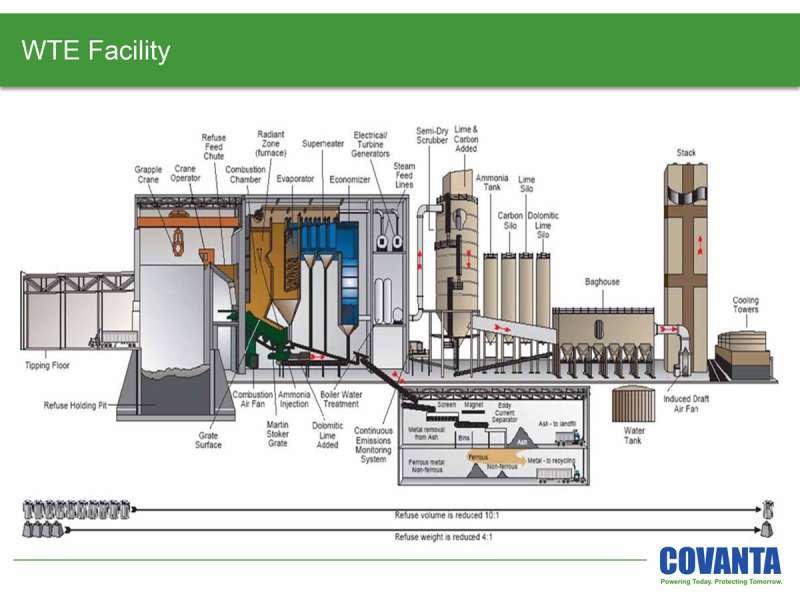
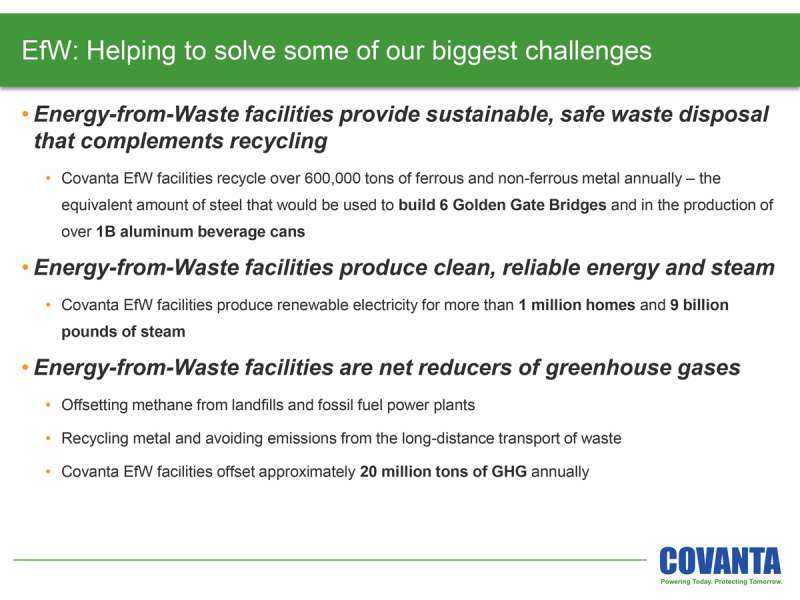
Florida, where I live, is the leading U.S. state for this type of energy generation.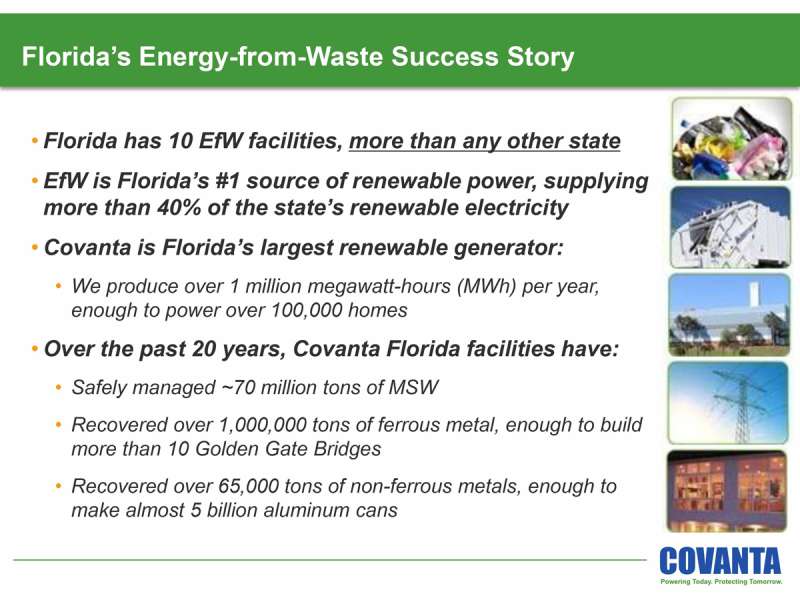
But as a country, the United States lags behind the rest of the world, where WtE is growing rapidly.
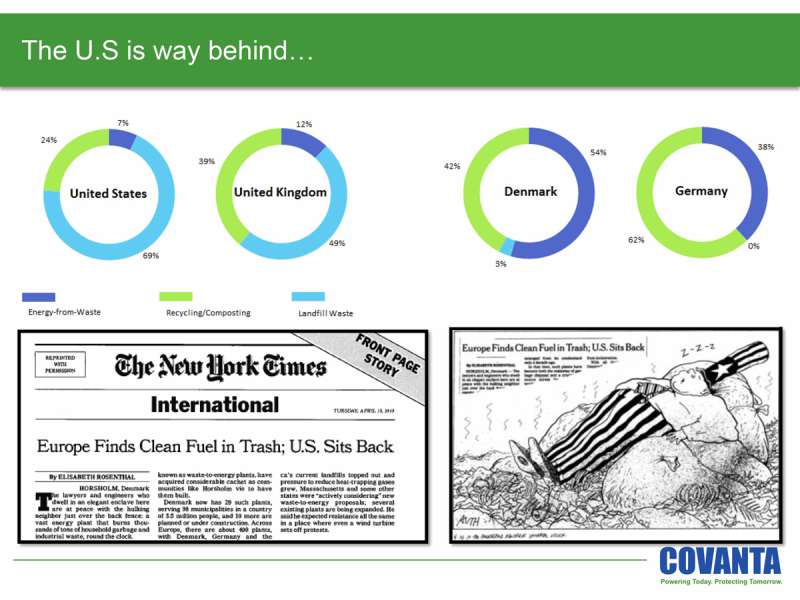
For many smaller countries, especially in Europe, land is at a premium and landfills take lots of land as do wind farms and solar farms. WtE plants have a small footprint and still produce large amounts of energy for that footprint.
With all the press about global warming, greenhouse gases that contribute are a big deal. Landfills are the #3 contributor, so eliminating landfills is a step in the right direction.
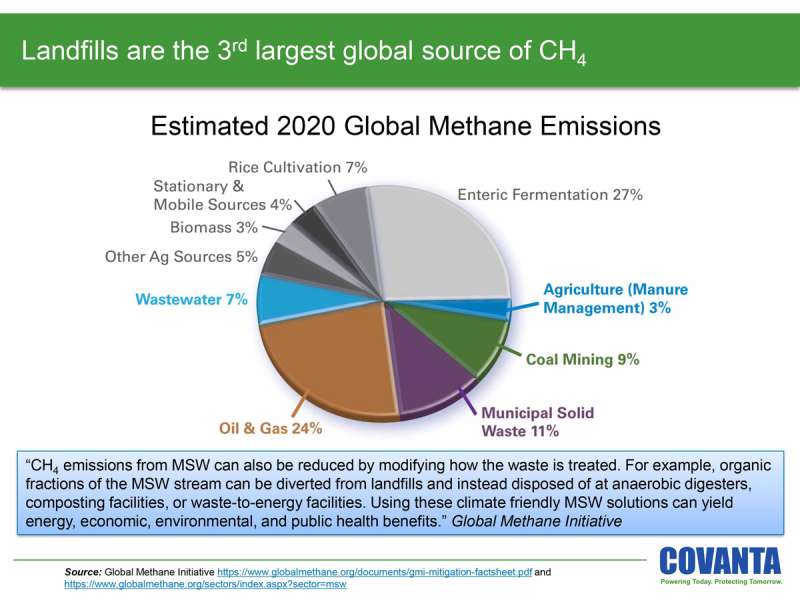
WtE is a net reducer of greenhouse gases by taking trash from landfills. The minor carbon dioxide emissions from WtE furnaces are offset by the reduction in methane by redirecting waste from landfills.
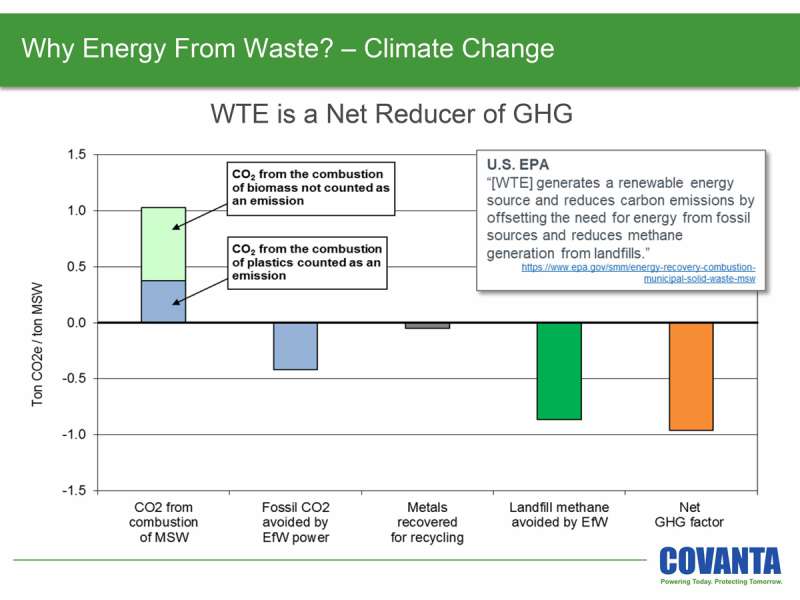
I mentioned land use. Let’s look at that a little more closely. If you break down energy generation based on the amount of land used in the process, WtE solutions look even better when compared to other green energy solutions and landfills.
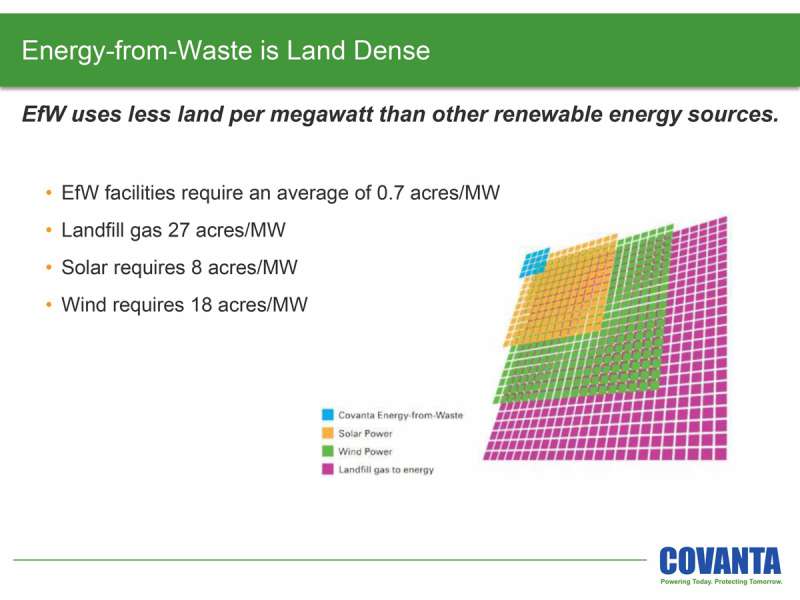
The biggest negative with WtE is the emissions from the burning process. Even that looks pretty good.
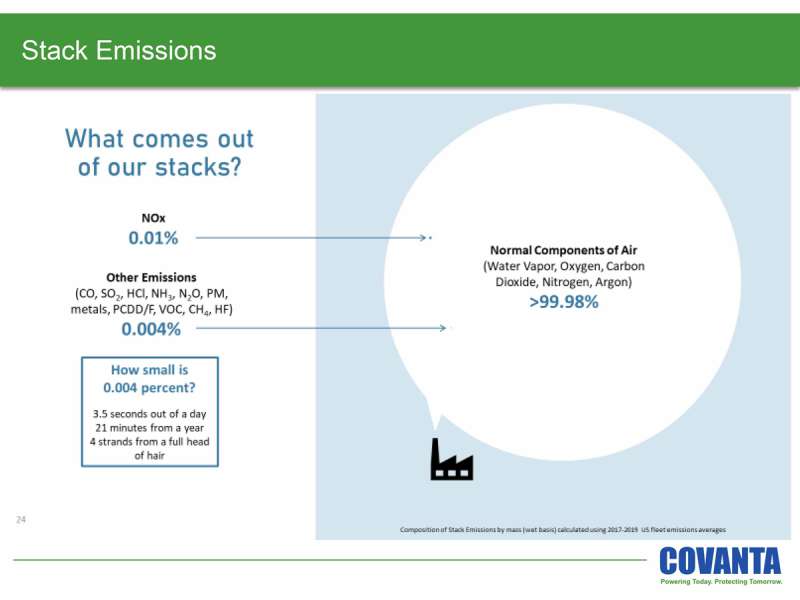
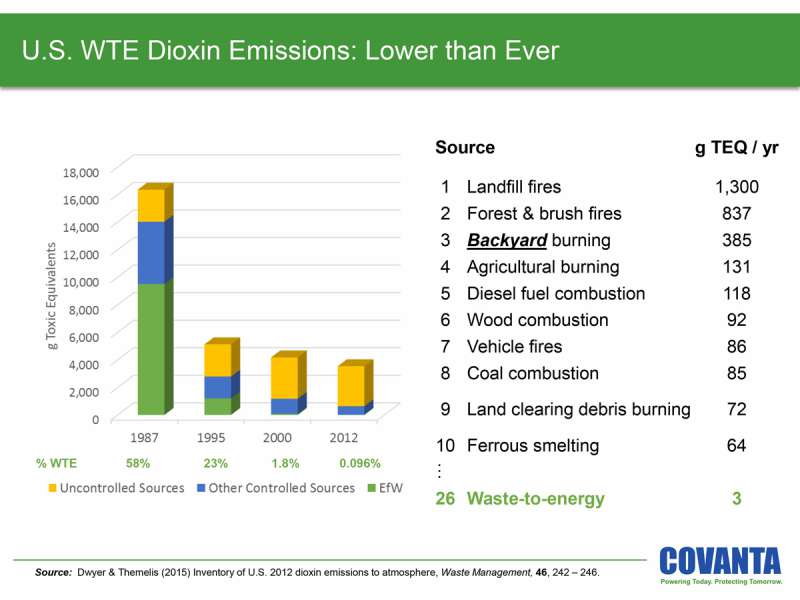
And when you compare the emission from a landfill for every ton of trash buried there versus every ton burned at a WtE facility, the net is a reduction in greenhouse gasses by burning trash versus burying it in a landfill.
The bottom line here is that for those of us at the presentation, our opinions were changed about the switch from curbside recycling and landfill trash processing to WtE. We had five separate pickups each week, two for trash, one for recycling, and one for yard waste. Now, we only have two per week. Reducing the number of waste truck pickups per week from five to two also resulted in a 60% reduction in trash vehicle emissions and road wear. Yay!
The tech behind it is pretty cool with self-sustaining furnaces and high-tech emission scrubbing. And knowing that ultimately, the electricity we use at home is at least in part being produced but the waste we toss out is pretty neat. This doesn’t mean we shouldn’t keep looking for ways to reduce what we toss and recycle what we can. Here in Florida, all Publix supermarkets have recycling boxes for newspapers, styrofoam, and plastic bags. That type of recycling works as the content is essentially pristine. Even with those efforts, we will still create trash. WtE solutions can take that trash and turn it into usable electricity and paving materials while reducing overall environmental impact. If your community is looking at WtE as a solution for handling your municipal trash, it is worth a serious look.
If you want to read more, check out U.S. Energy Information Administration. My thanks to Covanta for permission to use their slides for this article.



Gadgeteer Comment Policy - Please read before commenting
Look into Plasma Gasification, it’s a much cleaner process:
https://en.wikipedia.org/wiki/Plasma_gasification
It can be used to destroy radioactive waste and biowaste in addition to the usual trash, it doesn’t require as many scrubbers (which produce toxins that have to go somewhere) and it also produces power.